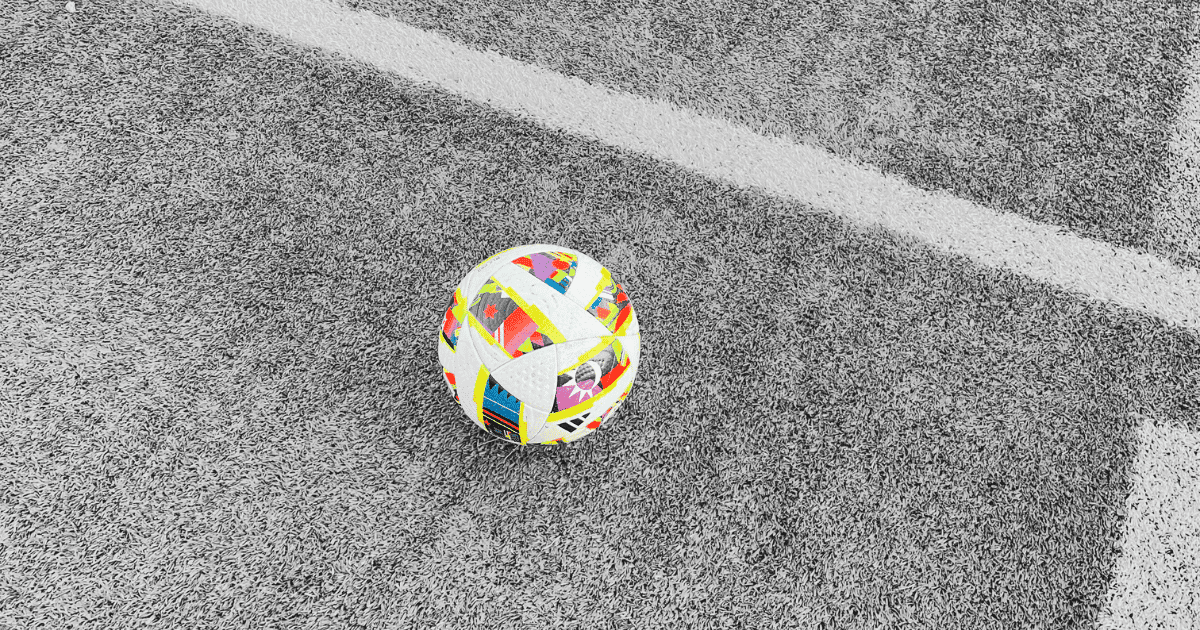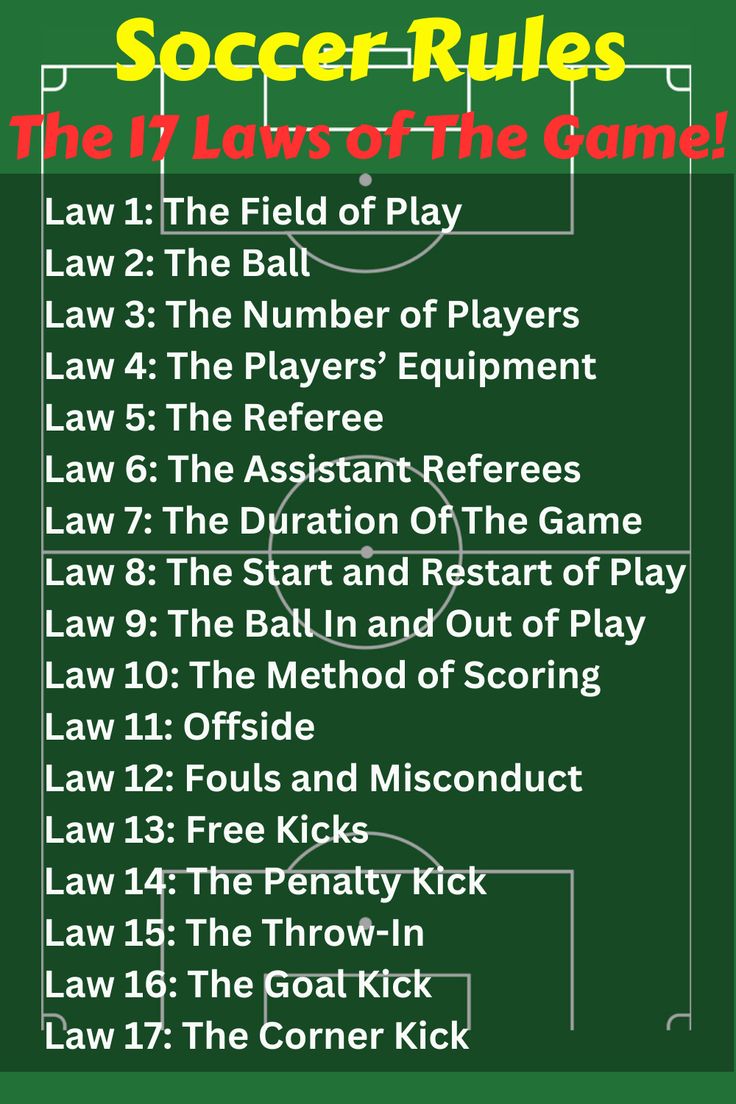# Introduction: Why the 17 Laws of Soccer Matter More Than You Think
Ever wondered why referees blow the whistle at certain moments or why a handball leads to a penalty kick? It all comes down to the 17 laws of soccer, the core rules shaping every official match worldwide. Understanding these laws is crucial—not only for players and coaches but also for fans craving deeper insights into the beautiful game. Missing just one crucial detail could cost a team the match or a fan an informed opinion.
In this in-depth guide, you’ll discover the full structure, meaning, and practical impact of the 17 laws of soccer. We’ll cover real-life examples, common misconceptions, and expert tips that elevate your soccer experience.
# What Are the 17 Laws of Soccer? A Quick Overview
The 17 laws of soccer, established by the International Football Association Board (IFAB), standardize how games are played from youth leagues to the FIFA World Cup. These laws span from the pitch’s dimensions to the critical rules about fouls, goals, and substitutions. Here’s a quick breakdown of the main areas they cover:
1. The Field of Play
2. The Ball
3. Number of Players
4. The Player’s Equipment
5. The Referee

6. The Other Match Officials
7. The Duration of the Match
8. The Start and Restart of Play
9. The Ball In and Out of Play
10. The Method of Scoring
11. Offside
12. Fouls and Misconduct
13. Free Kicks
14. The Penalty Kick
15. The Throw-In
16. The Goal Kick
17. The Corner Kick
These rules ensure consistency and fairness across all levels and regions.
# Deep Dive Into the Laws: Breaking Down Key Rules and Their Impact
Let’s explore how the 17 laws of soccer work in real matches:
– THE FIELD OF PLAY: Regulations cover pitch size, goal dimensions, and markings. Remarkably, FIFA mandates fields between 100-110 meters long for international matches (source: FIFA Laws of the Game).
– THE BALL: Must weigh 410-450 grams before play begins and measure 68-70 cm in circumference. This uniformity prevents unfair advantage.
– NUMBER OF PLAYERS: Teams must have 11 players, including a goalkeeper. Matches with fewer than 7 on a side are abandoned.
– PLAYER’S EQUIPMENT: Includes jersey, shorts, shin guards, socks, and cleats. Missing critical gear leads to stoppages or penalties.
– MATCH OFFICIALS: Referees, assistant referees, and the fourth official ensure rules are enforced. VAR officials aid decision making in higher-level games.
– DURATION & TIMEKEEPING: Standard games have two halves of 45 minutes, plus stoppage time for injuries and delays. Some leagues use extra time and penalties to settle ties.
# Comparison Table: Key Differences Between Soccer and Other Popular Sports
Curious about what makes soccer unique? Here’s a direct comparison:
| Feature | Soccer | Basketball |
|---|---|---|
| Number of Players | 11 per team | 5 per team |
| Duration | 2 x 45 minutes | 4 x 12-minute quarters |
| Main Scoring Method | Goals (ball into net) | Baskets (ball into hoop) |
| Substitution Rules | Usually 3-5 subs allowed | Unlimited substitutions |
| Offside Rule | Yes | No |
# Step-by-Step Guide: How to Master the 17 Laws of Soccer
Whether you’re a new fan, a referee in training, or a weekend player, understanding the rules can go a long way. Here’s our practical five-step guide:
1. START WITH THE BASICS: Read the official IFAB Laws of the Game, available online for free.
2. WATCH PROFESSIONAL MATCHES: Pause and replay crucial moments to observe laws like offside and fouls in context.
3. PRACTICE ON THE FIELD: Apply your knowledge during training. If possible, join friendly matches where rules are strictly enforced.
4. QUIZ YOURSELF: Use tools like the FIFA online quiz to test your understanding of complex scenarios.
5. STAY UPDATED: Laws are updated yearly. Make a habit of checking for changes each season (source: IFAB official updates).
For example, according to my experience coaching youth teams, we always have a “law of the week” discussion before practice. This helps players avoid common mistakes during matches.
# Common Misconceptions and Warnings: Don’t Fall Into These Traps
WARNING: Many beginners think only handballs committed by the goalie are legal. Actually, goalkeepers can only handle the ball inside their penalty area. Touching it outside results in a free kick to the opponents.
Another frequent myth is that contact with the ball by the arm automatically counts as a handball. However, the latest IFAB laws clarify that accidental contact doesn’t always result in a foul. Interpretation depends on movement, intent, and proximity (source: IFAB Law 12, 2023 edition).
# Expert Insights: Navigating Tricky Match Scenarios
Some situations regularly stump even seasoned players and fans:
– OFFSIDE CONFUSION: A player is offside if they’re nearer to the opponent’s goal line than both the ball and the second-last opponent at the moment the ball is played—UNLESS they are not involved in active play. VAR technology is increasingly used to clarify these moments, reducing human error but sparking new debates.
– ADVANTAGE RULE: Referees may let play continue after a foul if it benefits the fouled team. This discretion is unique to soccer compared to sports like basketball, where play usually stops for fouls.
– SUBSTITUTIONS: Since 2021, most competitions allow up to five substitutions due to fixture congestion (source: ESPN, 2021).
# Real-World Impact: How the 17 Laws of Soccer Influence Global Matches
Global tournaments like the FIFA World Cup rely on the 17 laws for fair play and competitive balance. However, these laws continuously evolve. For instance, changes to the handball rule and VAR implementation have impacted match outcomes—both positively and negatively. In the 2019 Women’s World Cup, new handball interpretations led to a record 29 penalties in the group stage alone (source: BBC Sport).
But here’s the twist—while rules create structure, their interpretation can vary between referees. This “human factor” keeps the sport dynamic and unpredictable.
# LSI Keywords and Synonyms in Context
While exploring the 17 laws of soccer, related terms like “soccer rules,” “football regulations,” “FIFA laws,” and “soccer referee guidelines” become relevant. Including these in your learning and discussions ensures a broader understanding, as different regions may use different terminology.
# Final Checklist: Your Practical 17 Laws of Soccer Compliance Launcher
– Ensure you understand each of the 17 laws, not just the basics.
– Regularly review updates from IFAB or local soccer associations.
– Use quizzes and on-field experience to reinforce learning.
– Watch professional games to see laws applied at the highest level.
– Stay alert to variations in local league and tournament rules.

– Discuss tricky laws like offside and handball with coaches or experts.
– Emphasize respect for referees and officials in all matches.
– Teach newcomers about the importance of consistent interpretations.
– Never assume old rules still apply—football is always changing.
Ready to take your game, refereeing, or fan knowledge to a new level? Mastering the 17 laws of soccer is your ticket to confidence, credibility, and deeper enjoyment—on and off the field.



















